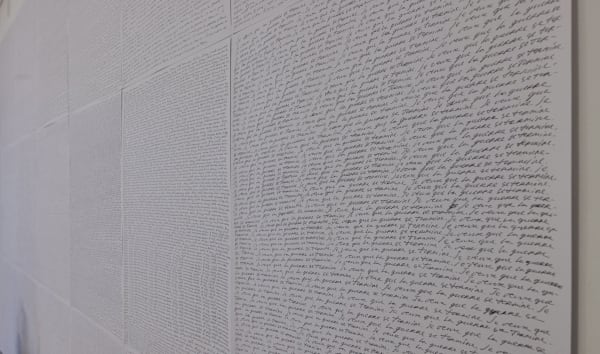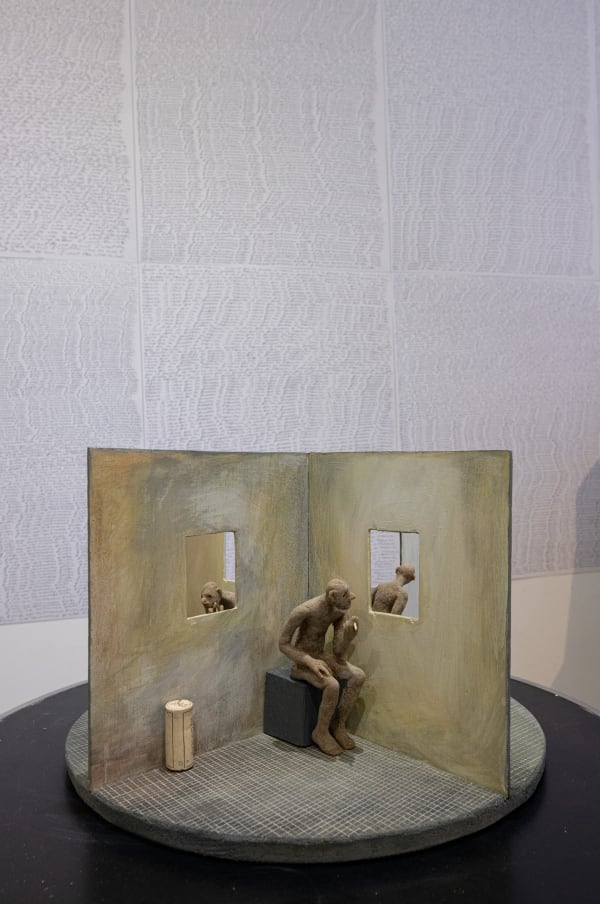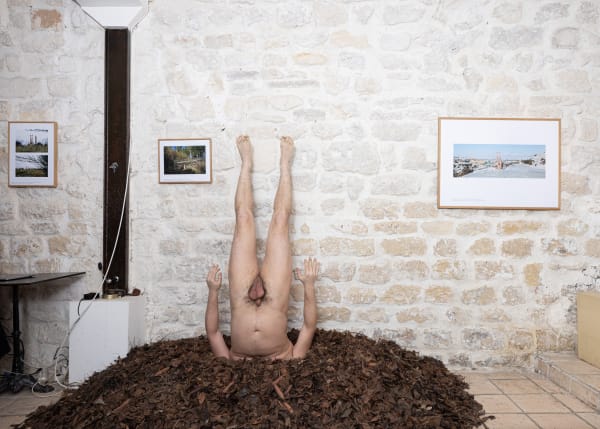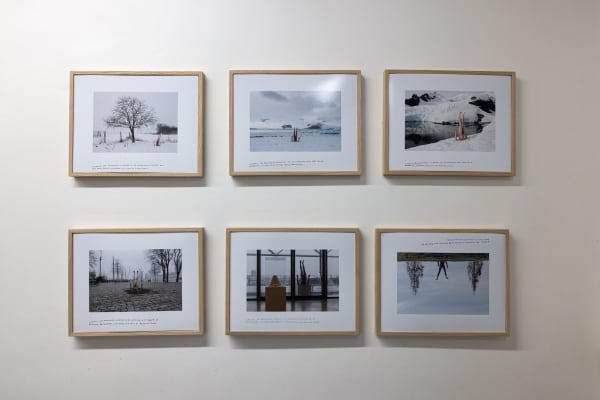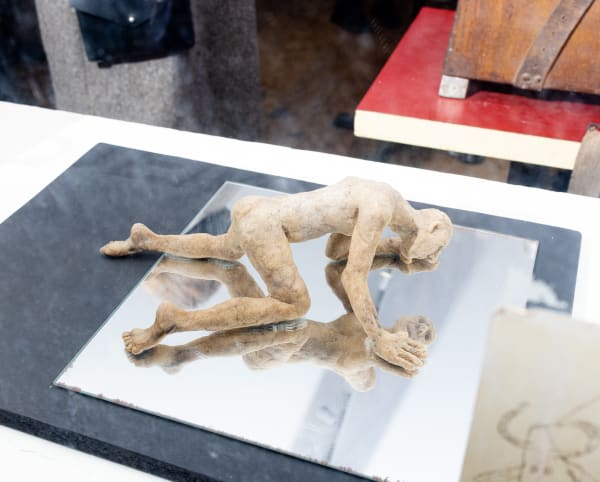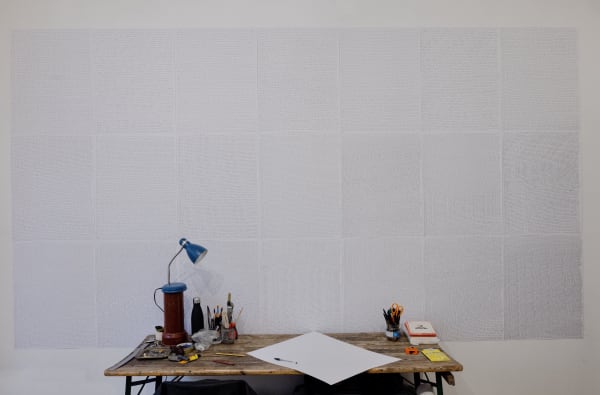‘A man is walking down the street. He stops in front of the fence and writes ‘Vasya was here’. You often can find such writings in various, and sometimes extremely inaccessible places. What drives this person? A desire to announce himself and his existence to the world? Or at least to leave a trace?
Earlier, ancient people who did not possess the skill of writing, rubbed clay or soot on the palm of their hand and put its print on the cave wall. I think they were driven by the same feeling. The artist is often driven by similar desire, and the only difference from abstract Vasya is that the inscription he leaves is slightly more sophisticated — the artist has special tools, skills, and if he is lucky, some his own voice helping to tell more detail about how he lived, what he felt, loved and hated.
Andrey Kuzkin
Extract from the exhibition text
The project consists of two parts. The first one is a continuation of the large-scale series of performances 'Phenomenon of Nature or 99 Landscapes with a Tree’ in which the artist contemplates man as a creature of the earth, like a vegetation. It was inspired by the graphic work of the artist's father, Alexander Kuzkin, depicting 99 landscapes with a tree. Since 2010 Andrey has traveled to different parts of the world standing naked on his head on the ground. The outcome of the project is 99 performances in different locations. In Paris he has shown it 74 and 75 times. The gallery exhibition also included documentation of previous performances from this project.
‘I wanted to do a performance in every new place where fate took me,’ says Andrey. — ‘It's a way for me to 'bring myself back to earth.' To tell myself that no matter where I am geographically, my situation is pretty much the same, perhaps equally absurd. The pictures on the walls tell me that I've been many places, but everywhere I've been I remain the same silly weed sticking out of the ground or snow...And now I'm stuck here.’
The second part of the exhibition ‘A. Kuzkin was here’ is an open studio. The gallery's space was transformed into the artist's studio, where new works by Andrey, made during the last 3 months of his stay in Paris, are on view. One of the walls was completely filled with a series of performative graphics consisting of several sheets of paper, on each of which was written the phrase ‘I want the war to end’ in four languages — Ukrainian, Russian, French and English. The time spent creating these sheets becomes an intangible capital and an important component of this work. ‘A strong desire, that has no way to be realized, has no direct outlet and has sublimated in these graphic sheets…’ says Andrey.
The exhibition also includes small sculptures — ‘bread men’, created by the artist upon his arrival in Paris after the sudden departure from Russia. Andrey molded them using everyday objects found in the basement of the house where he was living. He was literally settling into his new home. Bread, in this case, symbolizes the fragility of the human body. The Christian symbolism of bread is combined with the tradition of molding bread in prison. Along with the ‘bread’, the exhibition features another series of performative graphics with found objects and numbers. This is a kind of inner poetry, where the artist is trying to give meaning to random insignificant things, ‘to pull them out of the chaos of life, place them in a conditional space and preserve’ (A. Kuzkin).

